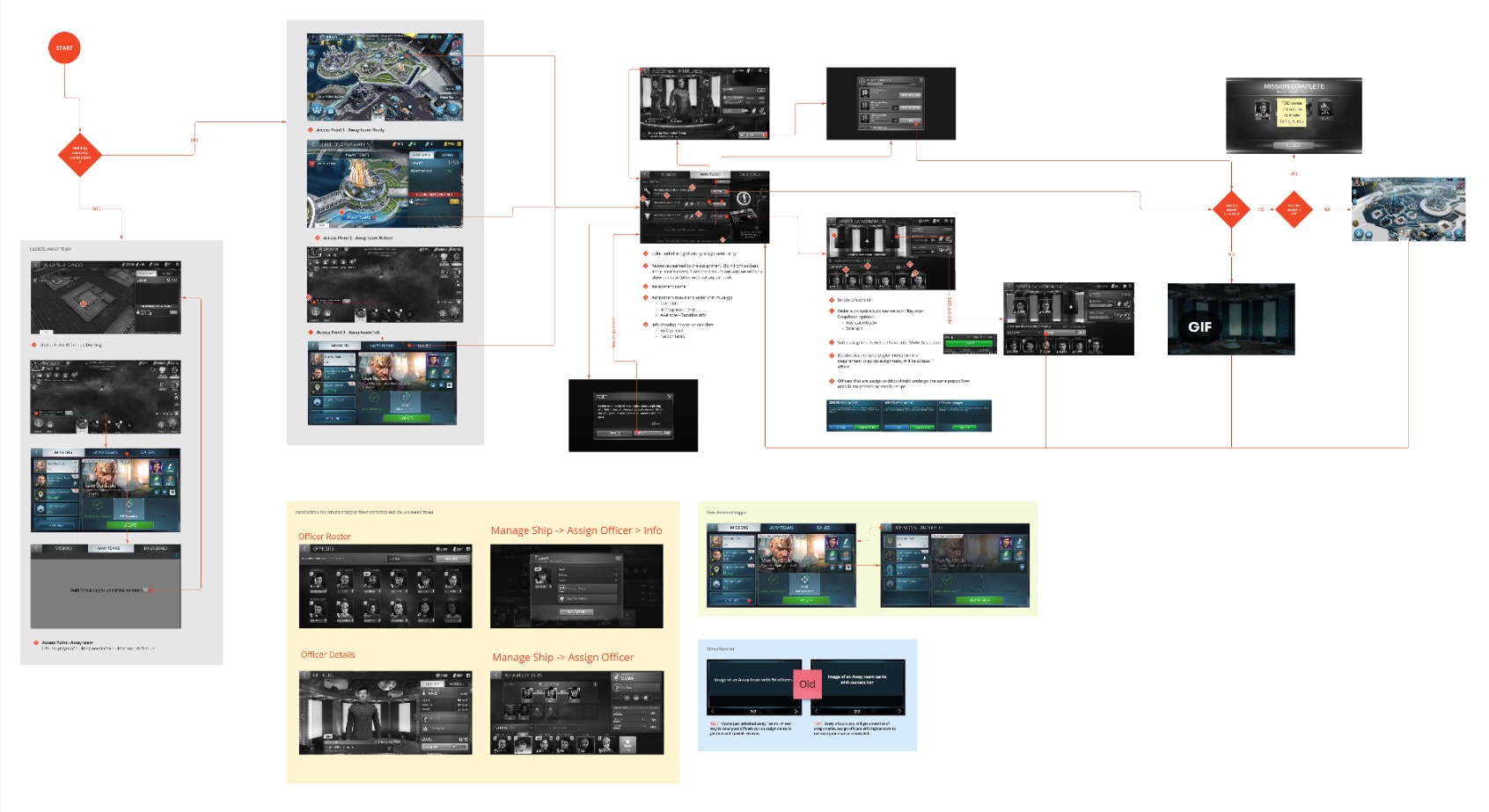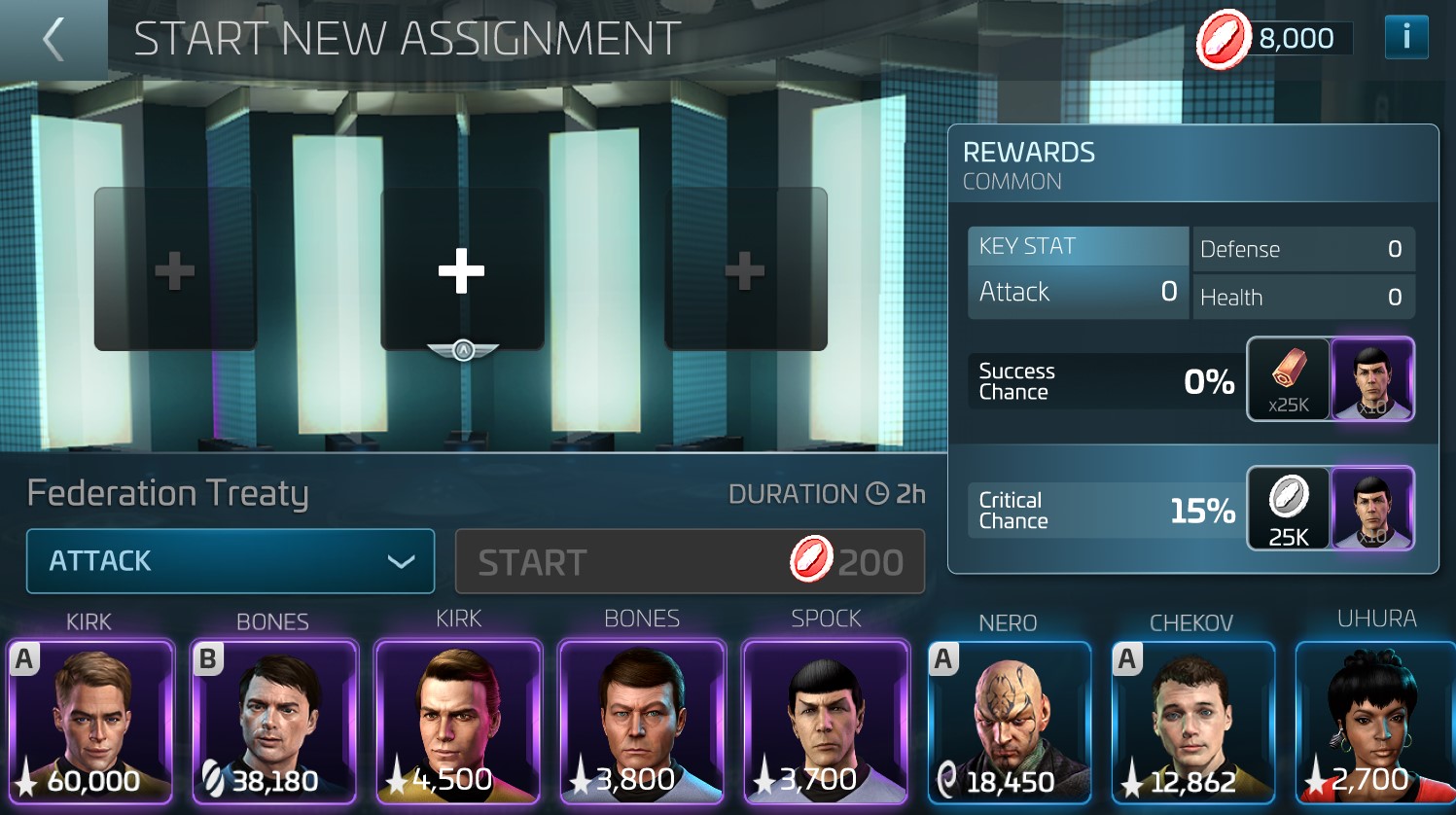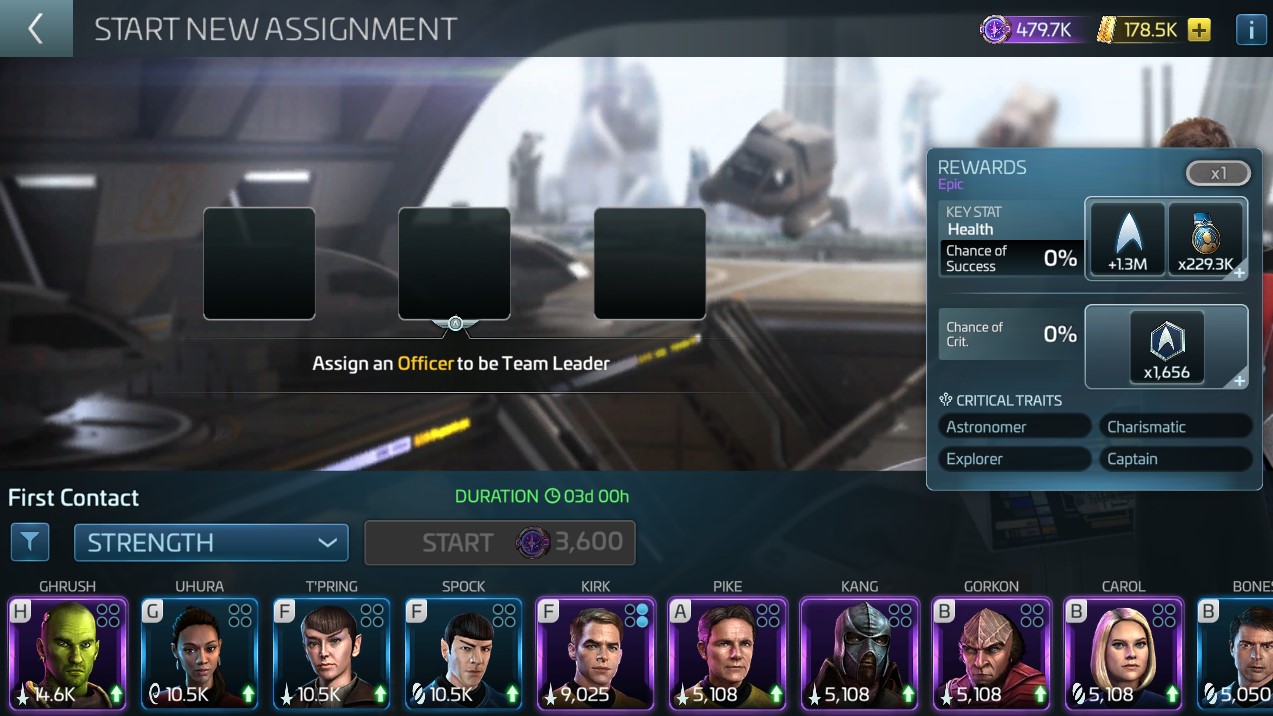< BACK
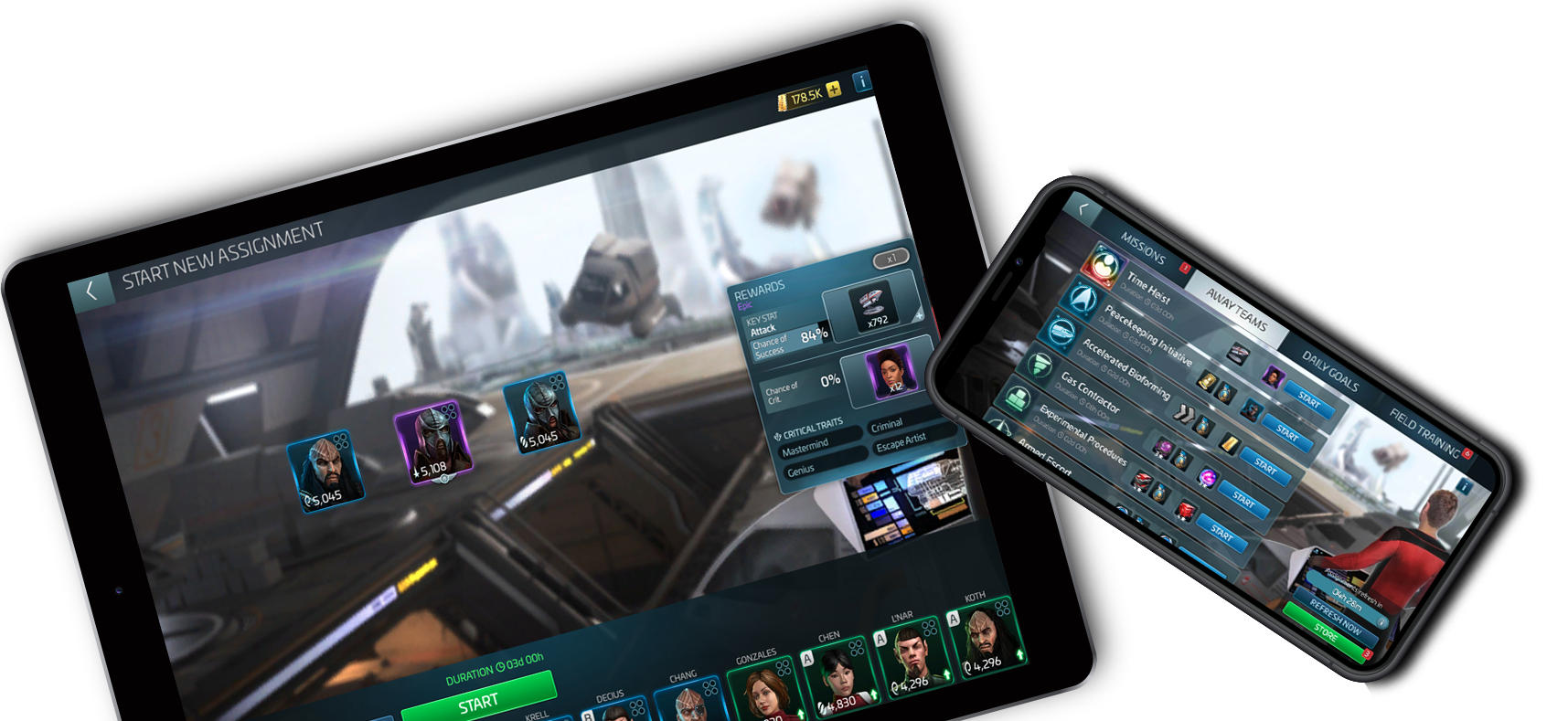
Star Trek Fleet Command
The Away Teams feature in Star Trek Fleet Command allows players to send unassigned officers on specialized missions across the galaxy, earning unique rewards based on the success of these assignments. To access these missions, players must unlock the Shuttle Bay through research and construct the building. These missions range in rarity from Common to Epic, offering increasingly valuable rewards. Officers’ traits play a critical role in boosting success and critical rewards, with traits being unlocked and upgraded using Trait XP earned from assignments. Additionally, the feature introduces a new research tree to enhance these missions, adding depth and strategy to gameplay.
With Phase 2, the feature gained even more strategic depth through the introduction of traits for officers. These traits allowed previously unused officers to become more valuable by assigning them to missions where their traits directly impacted the outcome. This update shifted the focus from core stats to traits, giving players greater flexibility in managing their roster. It also paved the way for future content, enabling the introduction of officers designed specifically for Away Teams, ensuring their value even if they weren’t strong in ship roles.
ROLE
UX Designer
TEAM
UX Team
Duration
10 months
01 – THE CHALLENGE
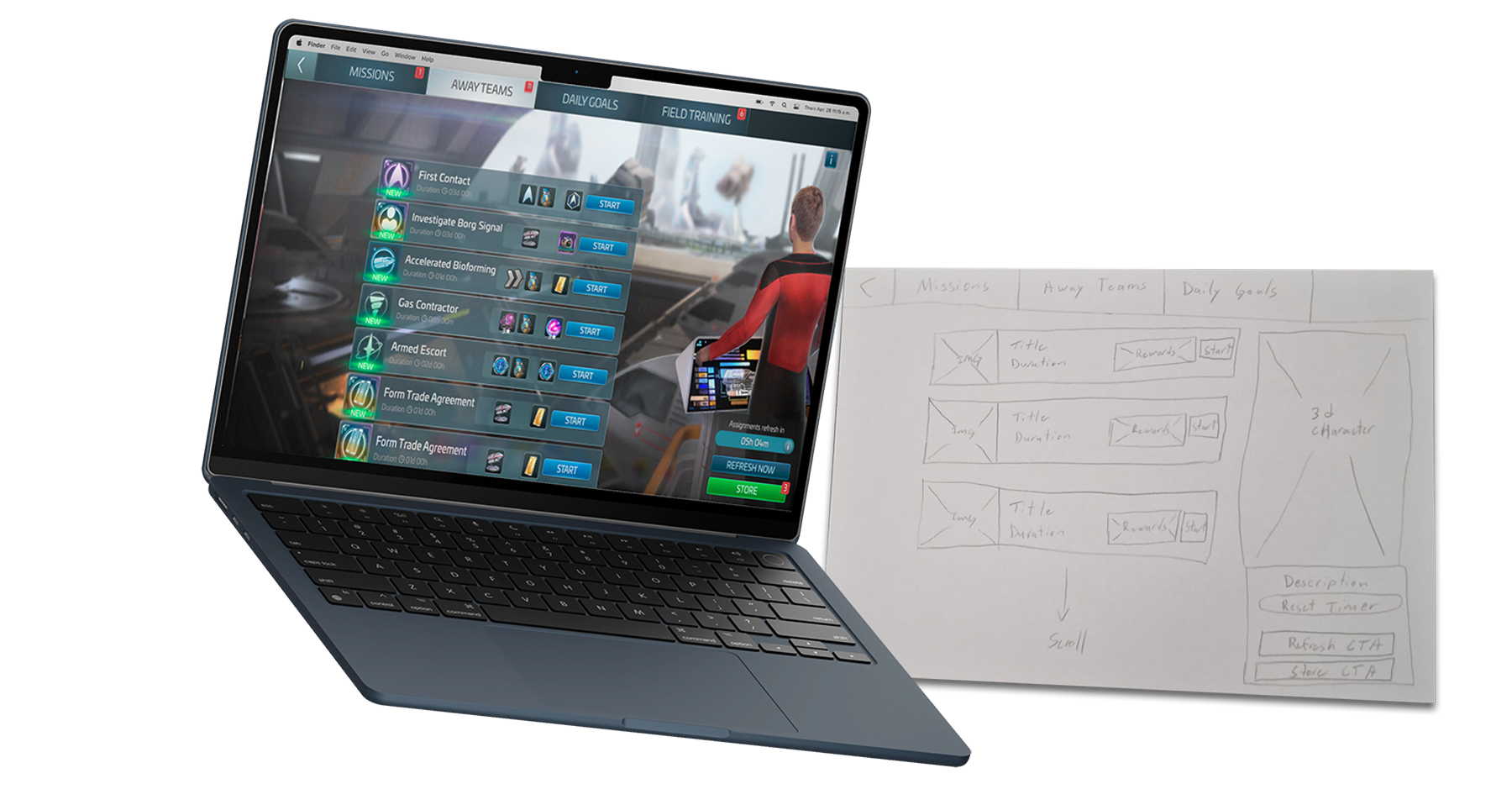
02 – FRUSTRATION
Phase 1
Players expressed frustration over the lack of incentives to unlock and upgrade officers, as they had limited opportunities to effectively utilize them in their rosters. Without a functional need for additional officers, there was minimal motivation to invest in packs containing new officers or resources for upgrades. This lack of utility also discouraged participation in officer-related events, except when the rewards were directly tied to increasing power. Consequently, the underutilization of idle officers significantly diminished the excitement and strategic depth associated with collecting and upgrading them.
Phase 2
Prior to Phase 2, the frustration around underutilized officers persisted, as only core stats like Attack, Defense, and Health were deemed relevant for assignments. This left many officers without a meaningful role in gameplay. Compounding this issue, players faced challenges in completing Epic assignments, which often required the use of Epic officers—the same officers typically stationed on their ships. The necessity to remove these key officers from their ships for 1-2 days created a conflict between fulfilling high-value assignments and maintaining a strong fleet. This imbalance reduced the appeal of investing in or engaging with officer-related content and events, further limiting overall player engagement.
Together, these issues underscored the need for a more rewarding and balanced system that would make officers more versatile, valuable, and integral to gameplay.
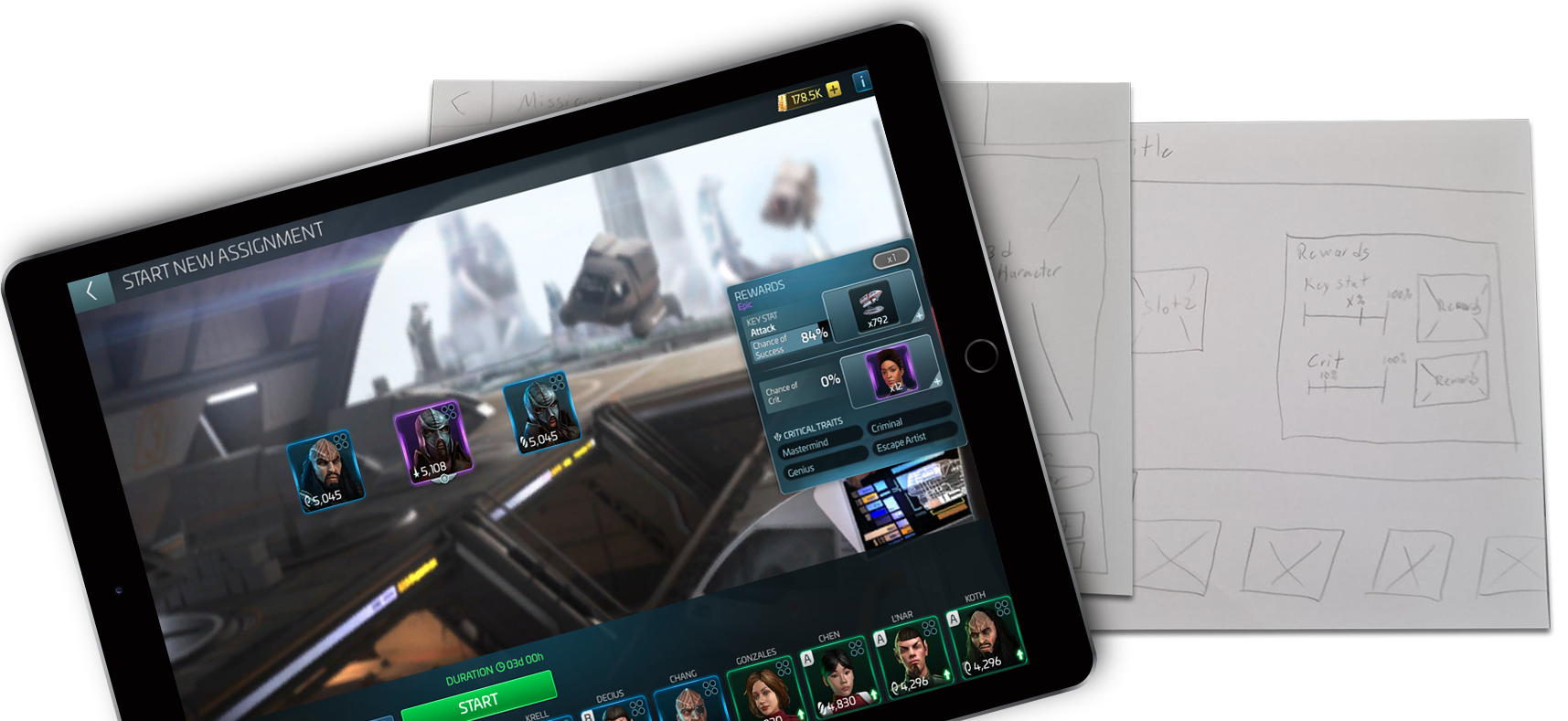
03 – GOALS
The goal of the Winthor Anywhere project was to overhaul the software, focusing on creating an intuitive and easy-to-use system. This involved making the software lighter to reduce hardware requirem
04 – RESULTS
The introduction of the Away Teams feature in Star Trek Fleet Command brought a transformative solution to the long-standing issue of idle officers, turning them into valuable assets through a well-designed system of assignments. By creating a feature that utilized the full breadth of the player roster, the game provided a sense of purpose and utility for officers beyond the limited capacity of ships, fostering deeper engagement and encouraging investment in acquiring and upgrading officers. The feature also enhanced the overall user experience (UX) by adding an intuitive, strategic layer that complemented the existing gameplay systems.
Phase 1 addressed player pain points by introducing assignments that offered reward diversity and catered to varying levels of player progression. The design struck a balance between clarity and functionality, ensuring that critical information—such as success rates, officer synergy, and reward multipliers—was accessible without overwhelming the player. The seamless integration of this new feature into the existing interface highlighted the game’s commitment to a streamlined UX, reducing friction and improving the overall playability for users of all skill levels.
Phase 2 expanded on these foundations by introducing traits, adding significant strategic depth to the feature. By aligning officer traits with the critical success chances of assignments, the system rewarded players who carefully considered roster composition and planning. The use of visual cues, such as trait maps on officer cards, ensured that this new complexity was presented in a clear and accessible way, maintaining a clean interface while increasing the strategic engagement of the feature. Players now had the opportunity to make more meaningful decisions, enhancing both their sense of agency and long-term investment in their rosters.
From a game design perspective, the Away Teams feature created new pathways for content scalability. By enabling the introduction of officers designed specifically for Away Teams, the feature allowed for flexible content updates that could cater to different play styles, including those focused on assignments rather than ship battles. This flexibility also enriched the game’s meta-strategy, ensuring that the player ecosystem continued to evolve with new challenges and opportunities.
Overall, the Away Teams feature significantly improved the gameplay experience, making every officer feel purposeful and rewarding players for strategic planning and roster management. The combination of thoughtful UX design, strategic depth, and content scalability has positioned Away Teams as a cornerstone feature, driving continued player engagement, increasing the value of in-game content, and enhancing the overall longevity of the game.
< BACK
